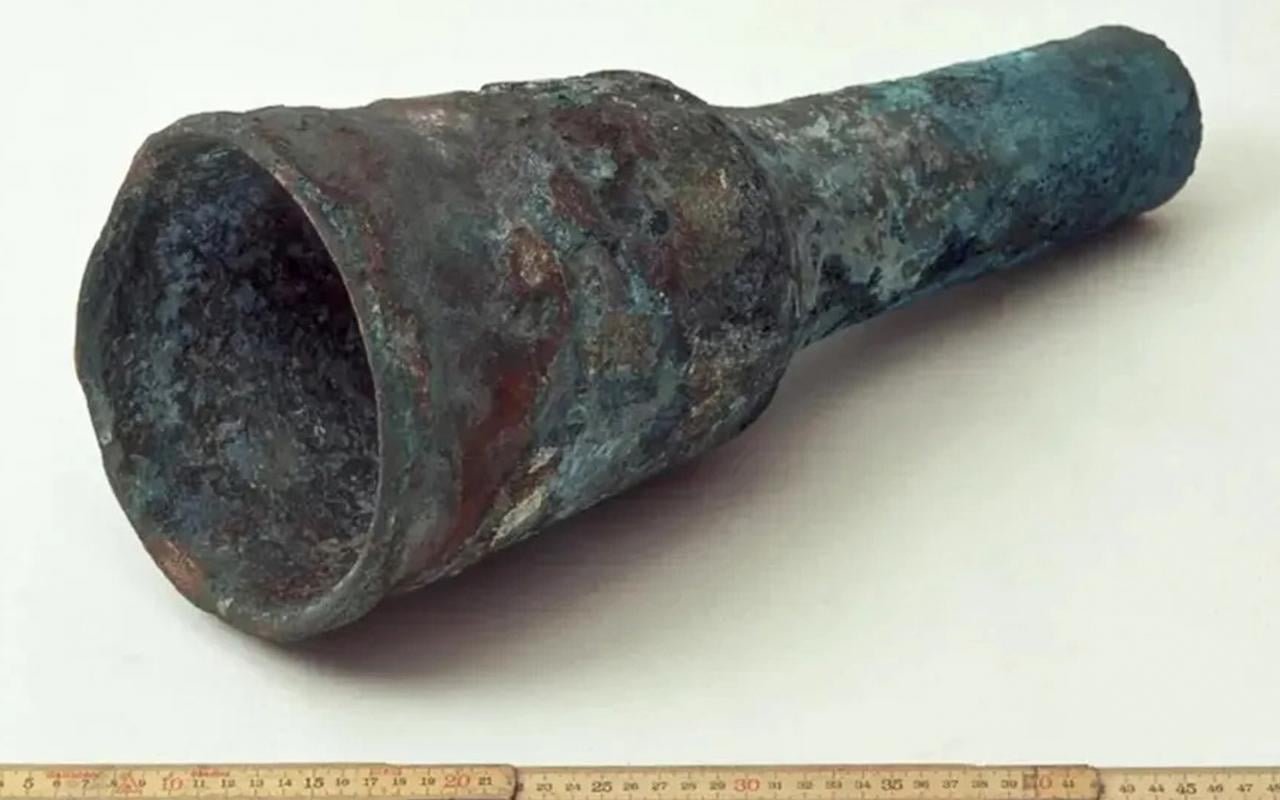An international team of researchers, led by maritime archaeologist Staffan von Arbin from the University of Gothenburg, has unveiled what could be Europe’s oldest shipboard cannon. The cannon was found in the waters off Marstrand on the Swedish west coast and has been dated back to the 14th century.
 The cannon is around 50 centimetres long. Credit: Bo Niklᴀsson / Bohusläns Museum
The cannon is around 50 centimetres long. Credit: Bo Niklᴀsson / Bohusläns Museum
The discovery was made by a recreational diver at a depth of 20 meters. Notably, the researchers have concluded that this cannon was not simply cargo but indeed a shipboard weapon, still loaded with a charge in its powder chamber, indicating it was battle-ready when it found its final resting place on the seabed.
Staffan von Arbin, the maritime archaeologist leading the study, remarked, “Thanks to the preserved remains of the charge, it has been possible to use radiocarbon dating to establish the age of the find. The study’s findings show that the Marstrand cannon is probably from the 14th century, making it one of the oldest artillery pieces ever found in Europe.”
This intriguing find challenges existing typologies of early artillery. Funnel-shaped cannons similar to the Marstrand cannon had previously been attributed to the 15th-16th centuries, but this discovery suggests that such models were in use as early as the 14th century. Furthermore, it highlights the early adoption of cartouches, textile packaging for the powder charge, which predates previous knowledge.
 Side (A), top (B), front (C), and rear (D) view of the Marstrand cannon, based on 3D data collected by means of a handheld laser scanner. Credit: Anders Gutehall, Visuell Arkeologi Norden
Side (A), top (B), front (C), and rear (D) view of the Marstrand cannon, based on 3D data collected by means of a handheld laser scanner. Credit: Anders Gutehall, Visuell Arkeologi Norden
Intriguingly, the researchers analyzed the cannon’s metal composition, revealing it to be a copper alloy with around 14% lead and minimal tin content. This composition, far from ideal for casting cannons, raises questions about the state of knowledge in cannon casting during this period.
The analysis also suggests that the copper ore used likely came from present-day Slovakia, while the lead may have originated from England or the border region between Poland and the Czech Republic.
This historical artifact carries with it tales of the maritime conflicts of the 14th century. Marstrand, renowned for its bustling port, was a vital link between Western Europe and the Baltic Sea. However, it was also a time of peril, with piracy and warfare threatening both ships and coastal communities.
The exact ship to which this cannon belonged remains a mystery, but it’s a window into a turbulent era where new forms of weaponry offered a tactical edge in the maritime struggles.
The researchers are now determined to locate and document the shipwreck ᴀssociated with this remarkable cannon. Though the ship may be significantly deteriorated and fragmented, a comprehensive survey of the site and its surroundings may yet yield valuable insights into this historical puzzle.
More information: Staffan von Arbin et al, (2023), The Marstrand Cannon: The earliest evidence of shipboard artillery in Europe?, The Mariner’s Mirror. DOI: 10.1080/00253359.2023.2225311





